Super Heavy/Starship is Elon Musk’s planned future standard SpaceX launch vehicle, meant to replace Falcon 9 and Falcon Heavy. It is meant to be a fully-recoverable two-stage liquid-fueled vehicle powered by new generation staged combustion SpaceX Raptor engines burning liquid methane and liquid oxygen (CH4/LOX). The first stage would perform vertical launch and landing profiles similar to Falcon 9/Falcon Heavy first stages. The second stage would use a side-ways aerodynamic reentry method followed by a vertical landing.
From the earliest days of SpaceX, Elon Musk talked about a giant “BFR” (Big “Falcon” Rocket) that could lift 100 tonnes or more to low Earth orbit. Such a rocket would be needed to support his Mars colonization dreams. During 2005, before SpaceX even attempted its first Falcon 1 launch, Mr. Musk described plans for such a rocket, powered by a cluster of “Merlin 2” engines. Merlin 2 would have been gas generator LOX/kerosene producing up to 770 tonnes of liftoff thrust.
During this period SpaceX proposed a “Falcon XX” concept that would have used six such engines making 4,630 tonnes of liftoff thrust to power a 10 meter diameter, 104 meter tall two stage rocket capable of lifting 140 tonnes to LEO. The second stage would likely have been powered by 68 tonne thrust LOX/LH2 staged combustion Raptor engines then under study by the company. A modified version of this concept, using a LOX/LH2 J-2X powered second stage, was included in NASA’s 2009-2010 “Heavy Lift Launch Vehicle Study” (HLLV).
BFR Versions
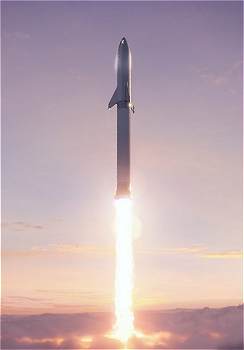
During 2012, SpaceX took a new direction, announcing plans to switch Raptor to full flow staged combustion LOX/Methane. Plans called for the engine to produce 360 tonnes of sea level thrust. By 2014, concepts called for a Falcon XX size rocket to be powered by nine such Raptors at liftoff, with one or two vacuum optimized Raptors powering the second stage, to lift 100 tonnes or more to LEO.
As Falcon 9 began to attempt first stage recoveries during 2015, the “BFR” concepts began to shift toward reuse, not only of the first stage but of both stages. As a result, the rocket grew much larger.
On September 27, 2016, at the International Astronautical Congress, Musk presented a design for a truly enormous 12 meter diameter, 122 meter tall, 10,478 tonne two-stage rocket named “Interplanetary Transport System” (ITS). Its first stage would have used 42 Raptor engines producing 13,154 tonnes of liftoff thrust. Nine Raptors would have powered its second “spaceship” stage. ITS would have lifted 300 tonnes to LEO. With multiple launches to refuel the second stage it would have been possible to boost nearly 500 tonnes toward Mars. Development costs for ITS were optimistically projected to be $10 billion.
One year later, at the same meeting, Musk presented a scaled down design named “BFR”, capable of lifting 100 tonnes to LEO with full reuse. It would be 9 meters diameter and 118 meters tall, weigh 4,400 tonnes at liftoff, and would use carbon composite propellant tanks and structures. The 3,065 tonne first stage would use 31 Raptors making 6,305 tonnes of thrust while the 1,335 tonne second stage would have 9 Raptors, three in “vacuum” configuration, producing 1,406 tonnes of thrust. The concept retained multiple-launch orbital refueling plans designed to send 220 tonnes toward Mars.
This 2017 BFR almost seemed average-size compared to the 2016 plans, but it still would have outweighed Saturn 5, the heaviest rocket ever launched, by nearly 1,400 tonnes. It would also have produced 1.8 times more thrust than Saturn 5, a rocket that created its own 4.6 Richter scale earthquakes when launched.
During March, 2018, SpaceX announced plans to build a BFR factory at the Port of Los Angeles. Clearing of an 18 acre site began, while giant tooling for BFR composite tank fabrication was being set up in a temporary structure nearby.
By September 2018, plans called for seven identical sea-level Raptor engines on the BFR second stage. SpaceX announced at the same time plans for a privately funded 2023 lunar circumnavigation mission using BFR.
Also read: Space Launch Report Special Report
Starship Hopper Mockup Phase Assembly, January 2019
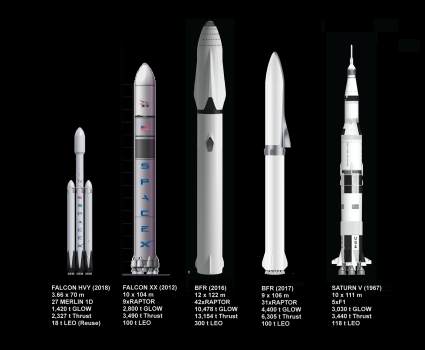
Then, on October 10, 2018, the U.S. Air Force rejected SpaceX’s proposal to fund some BFR development as part of a precursor National Security Space Launch (NSSL) Launch Services Agreement bid. Whether the loss contributed to a 10% SpaceX employment cutback at the end of 2018 and to cancellation of plans to build a factory at the Port of Los Angeles is unknown. Also unknown is whether the NSSL LSA bid was related to significant BFR design changes revealed in December, 2018. By then, plans for composite tanks and structures had been replaced by plans to use stainless steel.
During November, 2018, Elon Musk announced that the BFR launch vehicle first stage would be named “Super Heavy” while the second stage would be “Starship”. Musk hinted that more design changes were planned, including a reduction in the number of Raptor engines.
During the final weeks of December, 2018, SpaceX began building a stainless steel “Starship Hopper” test article at Boca Chica, Texas. This was initally a cosmetic build, performed outdoors, shorter than the planned Starship, with no internal tank bulkheads and with three dummy Raptor engines, that was set up for a “photo op”. After the flimsier “top hat” portion of the Hopper was destroyed during a late January 2019 windstorm, crews completed the installation of bulkheads and other hardware on the undamaged lower portion of the Hopper. This section, standing on three heavy landing legs, was built out of thicker steel plates, sheethed in a stainless steel layer, in the classic “battleship” style long-used for early propulsion tests of in-development rocket stages.
First Raptor Test Firing, February 3, 2019
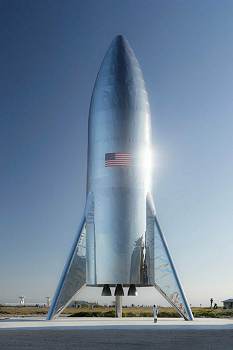
On February 3, 2019, SpaceX briefly test fired its first full-scale Starship Raptor flight engine in a McGregor, Texas test stand. The engine reached 172 tonnes of thrust during a subsequent firing, before it was damaged in an even higher-thrust run a few days later. Elon Musk reiterated that 200 tonnes thrust was the ultimate goal for initial Starship use, a number achievable using colder propellant temperatures then those used during the initial McGregor test firings.
The second Raptor (SN2) was then installed on Starship Hopper at Boca Chica, which had by this time been moved to a new testing pad being built near the beach. On April 3rd, 2019 the engine was test fired briefly during a “tethered hop”. On April 5, during the evening local time, the engine fired again to lift the Hopper to its full tether limit. The engine was then removed as SpaceX began to prepare for another round of testing.
On April 27, 2019, Raptor SN3 was test fired for 40 seconds at McGregor, the longest duration to date. By mid-May, Raptor SN4 had been delivered while SN5 was being assembled at Hawthorne, California. During the first week of June, SN4 was installed on the Hopper for fit checks, but plans called for SN5 to be used for the first untether hop tests.
Starhopper Final Flight
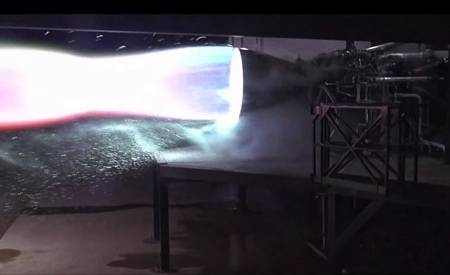
Meanwhile, SpaceX began to build new, all-stainless tank structures at both Boca Chica and near Cocoa, Floria. These “Mk1 and Mk 2” ships would be used for longer-range suborbital test flights using at least 3, and maybe up to 6, Raptor engines. During this period – the Spring of 2019 – Elon Musk said that construction of the first Super Heavy prototype might begin during the summer of 2019.
Starhopper ended up fitted with Raptor S/N 6 for its untethered hops at Boca Chica. A five second static test on July 16, 2019 preceeded an 18 meter altitude untethered hop on July 25, which lasted 22 seconds. A final, 150 meter altitude flight took place on August 17, 2019. During the 57 second long flight, Starhopper rose, translated sideways, and landed on a separate landing pad. The stumpy test vehicle was then retired from flight service, though plans called for it to serve as an engine test stand in the future.
Also read: Firefly Alpha Data Sheet
September 2019 Starship Update
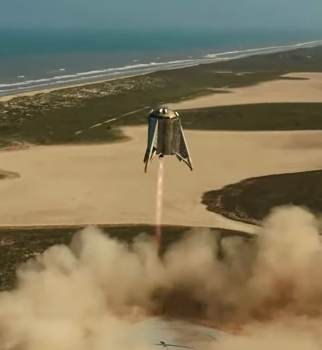
On September 27, 2019, SpaceX crews completed basic structural assembly of the Starship Mk 1 test article in Boca Chica. One day later, Elon Musk arrived to provide a program update while standing in front of the 50 meter tall, 200 metric tonne vehicle. Three non-flight Raptor engines had been fit-tested to the prototype by that time, testing the propulsion set up planned for Mk 1 suborbital test flights. Elon announced that Mk 1 would fly to 20 km within two months to test reentry and landing flight control and propulsion. Starship Mk 2 would perform similar tests from LC 39A in Florida. Suborbital testing would culminate in flights up to 100 km altitude.
Musk provided new details about the Starships. Mk 1 sported a pair of movable aft delta-fins and a pair of movable forward canards. These were designed to control the vehicle during reentry, when the vehicle would maintain a 60 degree angle from horizontal. After scrubbing velocity, the vehicle would flip to a nose-up attitude and start its engines for landing. While Mk 1 used 3/16 inch thick stainless steel, later vehicles would use steel as thin as 1/16 inch, attempting to reduce dry mass to 120 tonnes or less. Orbital Starships would carry hexagonal ceramic heat shield tiles on their leeward side. Musk said that Mk 3 and 4 Starships would also be built, at Boca and Cocoa, respectively. These would use six Raptor engines and hot gas thruster systems. Ultimately, Starship would have three central, movable “sea level” Raptors surrounded by three fixed “vacuum” Raptors.
Non-Flight Raptors on Starship Mk1, September, 2019
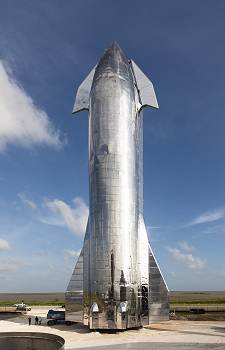
After completing four prototype Starships, SpaceX would begin work on its first “Super Heavy” booster at Boca – clearly many months after Musk’s earlier “summer 2019” statements. The booster would carry 24 to 31 Raptor engines, with a variable number possible. New launch mounts would be built at both Boca Chica and LC 39A to handle the massive rocket. The stage would fly much like current Falcon 9 stages, using grid fins for reentry flight control and engine restarts for vertical landings. Super Heavy now would stand about 68 meters tall. The 118 meter tall two-stage vehicle could ultimately weigh about 5,000 tonnes at liftoff and rise on about 7,500 tonnes of thrust, growing heavier from 2017 plans. It would be able to boost 100 tonnes to LEO initially, with 150 tonnes as a future goal.
After the September 28 presentation, Starship Mk1 was disassembled, its non-flight engines and nose section disconnected and removed. The disassembly was done to allow further detailed manufacturing to continue.
Vehicle Configurations
| LEO Payload (metric tons) | Configuration | Dimensions (meters) | Liftoff Mass (metric tons) | Liftoff Thrust (metric tons) | |||
| BFR 2016 | ~300 t | t | t | 2 Stage Fully Recoverable | 12 x 122 m | 10,478 t | 13,154 t |
| Super Heavy/Starship 2017 | ~100 t | t | t | 2 Stage Fully Recoverable | 9 x 106 m | 4,400 t | 6,305 t |
| Super Heavy/Starship 2019 | ~100 t | t | t | 2 Stage Fully Recoverable | 9 x 118 m | ~3,900-5,000 t | 4,800 t to 6,200 t |
Vehicle Components
| Super Heavy Stage 1 (2017) | Starship Stage 2 -(2017) | Super Heavy Stage 1 (2019) | Starship Stage 2 -(2019) | |||||
| Diameter (m) | 9 m | 9 m | 9 m | 9 m | ||||
| Length (m) | 58 m | 48 m | 68 m | 50 m | ||||
| Empty Mass (tonnes) | ~120 t (est) | 85 t | ~300 t (est) | 200 t (120 t goal) | ||||
| Propellant Mass (tonnes) | ~2,525 t (est) | 1,100 t | ~2,525 t (est) (~3,300 t goal) | 1,200 t | ||||
| Total Mass (tonnes) | 3,065 t | 1,335 t | 3,065-3,500 t | 1,400 t | ||||
| Engine | Raptor | Raptor | Raptor | Raptor | ||||
| Engine Mfgr | SpaceX | SpaceX | SpaceX | SpaceX | ||||
| Fuel | CH4 | CH4 | CH4 | CH4 | ||||
| Oxidizer | LOX | LOX | LOX | LOX | ||||
| Thrust (SL tons) | 6,305 t | 1,220 t | 4,800-6,200 t | 1,200 t | ||||
| Thrust (Vac tons) | t | 1,314 t | t | 1,300 t | ||||
| ISP (SL sec) | 330 s | 330 s | 330 s | 330 s | ||||
| ISP (Vac sec) | 356 s | 356/375 s | 356 s | 356/375 s | ||||
| Burn Time (sec) | s | s | s | s | ||||
| No. Engines | 31 | 6 | 24-31 | 6 | ||||
| Comments | – | – | – | – | – | – | – | – |
Super Heavy/Starship Flight History Date Vehicle No. Payload Mass Site Orbit (kmxkmxdeg) ------------------------------------------------------------------------------------- NN/NN/NN AAAAA NNN AAA NN AA AA --------------------------------------------------------------------------------------- ----------------------------------------------------------------------- LIST BY STAGE 1 SERIAL NUMBER X = Expended OL = Ocean Landing DRL = Down Range Platform Landing LZ1 = Landing Zone 1 Landing -X = Failed Landing -S = Successful Landing (Scrapped) -D = Successful Landing (Saved for Display) -M = Successful Landing (Mothballed) STA = Structural Test Article QTA = Qualification Test Article Stage No. Date Variant/No. Description Mass Site Stg1/Result Orbit ------------------------------------------------------------------------------------- ----------------------------------------------------------------------------------



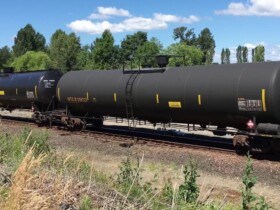



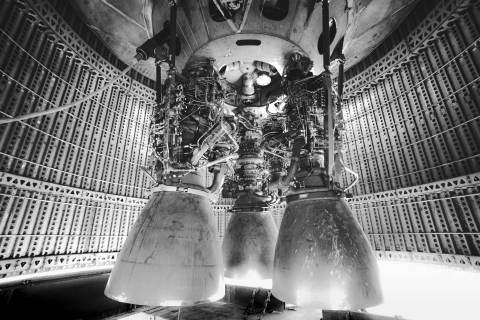
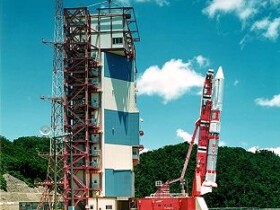





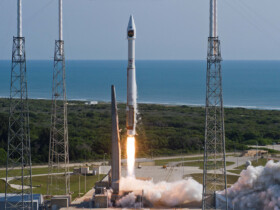
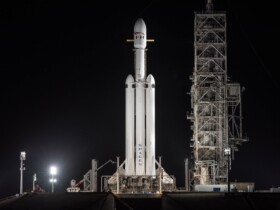
Got a Questions?
Find us on Socials or Contact us and we’ll get back to you as soon as possible.